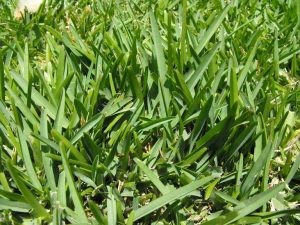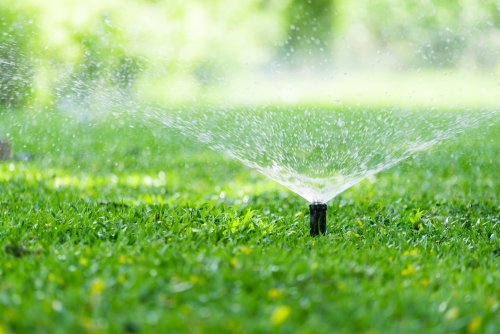Tips for Lawn Care

Natural lawns create a beautiful, colorful setting. Preventing diseases and weeds from damaging your lawn is key for a healthy green carpet of grass. We want to give you some important tips to help you keep your lawn in good condition.
Water your lawn
This is essential to keep it alive. If you want a green lawn all summer long, watering is extremely important. In order to prevent over or under watering, you need to have an idea of how much water to use, how often you should water, the best time of day to water, different watering options (with a hose or sprinklers), water quality, etc…
As for how often you should water your lawn, that depends on the temperature and humidity. You can tell when your grass needs water because it’ll start to look a little bluish-gray and the older blades will start to curl or wither.
If you’ve newly laid your lawn, watering it once a day is crucial so that the seeds can germinate and create a strong root system.
You can manually water your lawn or use an automatic sprinkler system. Automatic sprinkler systems are very convenient because you only have to program them and they’ll take care of the watering for you.

Time to mow
The right cut and how often you mow are essential factors for a healthy, beautiful lawn.
You should mow weekly. When your grass is two or three centimeters high it’s ready to cut. If you leave it to grow any longer, the blades will weaken when you cut the grass.
Don’t throw away the cut grass. You can use it to make compost.

Cutting your lawn
Regularly cutting your grass will help create a lush lawn.
The key lies in cutting your lawn a little at a time and frequently. When mowing, changing the direction and pattern is important to prevent the roots from all sprouting in the same direction.
The most important tip to remember for each cut is to set the blades to half or two-thirds, which is around 5 cm. During the summer, you should let your grass grow a little longer. This means it will stand up to dry weather better and stay green.
When should you fertilize?
Starting from the beginning of spring, you should fertilize every four or five weeks. The fertilizer pack will tell you how much you should use for your lawn. You should fertilize three times a year: in spring, summer, and autumn.
Make sure to use a fertilizer that has a long product-life to keep nitrogen from contaminating the aquifers.
For lawns that are in shady areas, moss can become a problem. In specialized lawn stores, you can find fertilizers that carry an anti-moss product, which will help recuperate that greenness for your lawn.
This is a crucial step in the lawn care process; failing to fertilize your lawn could cause weeds. Clover is a clear indication of a lack of fertilizer. If you see any clover you should use an herbicide to remove these flowers.

Control your weeds
You can remove weeds with specialized equipment. However, you can remove smaller weeds manually with a weeder. When you remove them, you should remove the entire root to keep the weed from growing back.
If your lawn has more weeds than grass, the only option is to lay a new one.
Aerating your lawn
Grass roots need air to grow. However, sometimes, the soil isn’t loose enough to allow air to reach the roots, impeding their growth.
You can solve this by taking a rake and poking holes into the ground. The surface water will carry oxygen to the roots allowing them to breathe and grow more efficiently.
With these tips, you can grow a lawn that’s the envy of the entire neighborhood. Put them into practice and enjoy a beautiful, healthy yard.
Natural lawns create a beautiful, colorful setting. Preventing diseases and weeds from damaging your lawn is key for a healthy green carpet of grass. We want to give you some important tips to help you keep your lawn in good condition.
Water your lawn
This is essential to keep it alive. If you want a green lawn all summer long, watering is extremely important. In order to prevent over or under watering, you need to have an idea of how much water to use, how often you should water, the best time of day to water, different watering options (with a hose or sprinklers), water quality, etc…
As for how often you should water your lawn, that depends on the temperature and humidity. You can tell when your grass needs water because it’ll start to look a little bluish-gray and the older blades will start to curl or wither.
If you’ve newly laid your lawn, watering it once a day is crucial so that the seeds can germinate and create a strong root system.
You can manually water your lawn or use an automatic sprinkler system. Automatic sprinkler systems are very convenient because you only have to program them and they’ll take care of the watering for you.

Time to mow
The right cut and how often you mow are essential factors for a healthy, beautiful lawn.
You should mow weekly. When your grass is two or three centimeters high it’s ready to cut. If you leave it to grow any longer, the blades will weaken when you cut the grass.
Don’t throw away the cut grass. You can use it to make compost.

Cutting your lawn
Regularly cutting your grass will help create a lush lawn.
The key lies in cutting your lawn a little at a time and frequently. When mowing, changing the direction and pattern is important to prevent the roots from all sprouting in the same direction.
The most important tip to remember for each cut is to set the blades to half or two-thirds, which is around 5 cm. During the summer, you should let your grass grow a little longer. This means it will stand up to dry weather better and stay green.
When should you fertilize?
Starting from the beginning of spring, you should fertilize every four or five weeks. The fertilizer pack will tell you how much you should use for your lawn. You should fertilize three times a year: in spring, summer, and autumn.
Make sure to use a fertilizer that has a long product-life to keep nitrogen from contaminating the aquifers.
For lawns that are in shady areas, moss can become a problem. In specialized lawn stores, you can find fertilizers that carry an anti-moss product, which will help recuperate that greenness for your lawn.
This is a crucial step in the lawn care process; failing to fertilize your lawn could cause weeds. Clover is a clear indication of a lack of fertilizer. If you see any clover you should use an herbicide to remove these flowers.

Control your weeds
You can remove weeds with specialized equipment. However, you can remove smaller weeds manually with a weeder. When you remove them, you should remove the entire root to keep the weed from growing back.
If your lawn has more weeds than grass, the only option is to lay a new one.
Aerating your lawn
Grass roots need air to grow. However, sometimes, the soil isn’t loose enough to allow air to reach the roots, impeding their growth.
You can solve this by taking a rake and poking holes into the ground. The surface water will carry oxygen to the roots allowing them to breathe and grow more efficiently.
With these tips, you can grow a lawn that’s the envy of the entire neighborhood. Put them into practice and enjoy a beautiful, healthy yard.







